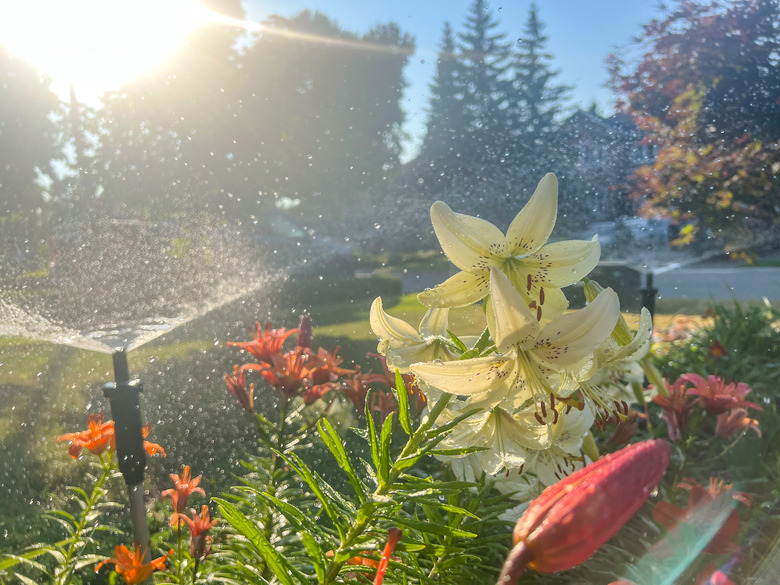How Does An In-Ground Lawn Sprinkler System Work?
We may receive a commission on purchases made from links.
In-ground sprinkler systems are the easiest and most effective way to water lawns and gardens. With these systems, you don't need to remember to water your plants. Underground sprinklers are strategically laid out and scheduled to provide the ideal amount of water to your greenery at the perfect time, minimizing water waste. An in-ground sprinkler system consists of five main components: the backflow preventer, the controller, the valves, the pipes, and the sprinkler heads. Here's a look at the components of an in-ground sprinkler system and how they work.
Sprinkler System Backflow Preventer
Sprinkler System Backflow Preventer
Water from your mainline diverts to your sprinkler system before it enters your home. A backflow preventer is located at this point to ensure potentially contaminated water from the sprinkler system cannot reenter your main water supply and taint your water. The backflow preventer also features a shutoff valve for when you need to turn off your sprinkler system.
Sprinkler System Controller
Sprinkler System Controller
Some sprinkler systems use a manual controller that activates with the push of a button, but most utilize an automated controller with a timer. The controller acts as the brain of the entire system, telling it where to release water, when, and at what flow rate. Due to its sensitive electronics, the controller is usually located in a garage, shed, or another indoor area.
Sprinkler System Water Valves
Sprinkler System Water Valves
After the backflow preventer, the main pipe usually splits off in different directions. A valve is installed at the start of each junction, blocking or permitting the water to flow into the pipes. The valves are usually installed around the perimeter of the house and are typically housed underground in a sprinkler valve box, though they are occasionally located above ground.
The controller connects to the valves and sends them electrical signals, telling them when and how much to open. When the timer on the controller says the water should stop, the controller sends a signal to the valves to close again, shutting off the flow of the water. Each valve is connected to a different area of the yard, so the controller operates them independently.
Sprinkler System Water Pipes
Sprinkler System Water Pipes
Sprinkler system pipes are buried around 12 inches deep and are usually made from PVC, though parts of the system may use poly tubing instead. Because different parts of the yard require different amounts of water based on the landscape type, sun exposure, and elevation, sprinkler systems are divided into zones. The pipes connected to each valve serve a distinct zone with its own sprinklers.
The Sprinkler Heads
The Sprinkler Heads
When the controller activates, it sends a signal to the valves, causing them to open. When the valves open, they release water into the pipes, eventually reaching the sprinkler heads, where pressure causes the water to spray out. Sprinkler head functionality and spray patterns vary. Some of the most common sprinkler head styles include:
-
Pop-up sprinklers: These hide underground
until they are forced up by water pressure after the valve opens. When pressure
drops after the valve closes, they sink below ground again. These are ideal for
lawns, as they do not present a tripping hazard. -
Shrub sprinklers: These stationary models
are taller than pop-up sprinklers. They are designed for landscaping with taller
plants so the spray isn't blocked by vegetation. -
Rotating sprinklers: These spray a long
distance in a circular or semicircular pattern. Because their spray reaches a
long distance, they are preferable in areas with at least a 15-foot diameter. -
Fixed sprayers: Like showerheads, these do
not change their spray pattern. They typically do not spray far and are better
for smaller areas.
